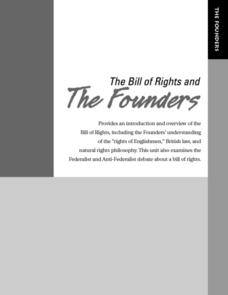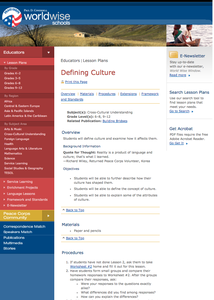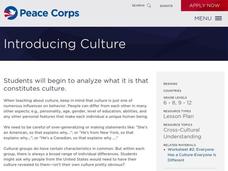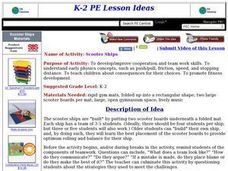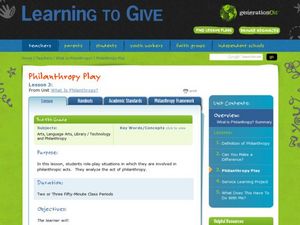Curated OER
The Bill of Rights and the Founders
Young scholars explain similarities between historical statements of rights and their modern applications, explore ideas of "Rights of Englishmen" and natural rights, discuss evolution of concept of rights and its impact on Bill of...
Curated OER
Learning About Location: Charting the Path of the George W. Elder
Students acquire a working knowledge of the geographical concepts: absolute location, relative location, longitude and latitude. They analyze primary sources that shows the physical and human characteristics of the places along the 1899...
Curated OER
Banking
Students correctly write a check and fill out a bank deposit slip. They understand the concept of balancing a checkbook by balancing a bank statement with a check register. Students play with the stock market to understand it a little...
Curated OER
Policies that Relate to American Indians
Eleventh graders demonstrate an understanding of the impact of the western settlement patterns on American Indians. They analyze the growth and division of the United States from 1820 through 1877 and examine the non-Indian concept of...
Curated OER
Defining Culture
Young scholars define culture and examine how it affects them. They describe how their culture has shaped them, define the concept of culture, and explain some of the attributes of culture. The research the customs and culture of the...
Curated OER
Introducing Culture
Students analyze what it is that constitutes culture. They describe how the concept of culture relates to their own experience and imagine that they are extraterrestrials-peaceful, intelligent creatures from another planet who have...
Curated OER
About the Census
Students interpret a variety of informational texts to gain understanding of basic concepts about how census data are used. In this census lesson, students read maps, complete worksheets, and work in small groups to become aware of...
Curated OER
Scooter Ships
Students explore simple physics concepts such as push/pull, friction, and speed. In this physics/physical education activity, students work in co-operative groups to "build" a spaceship out of scooters and folded mats. Teams experiment...
Curated OER
Providing a Helping Hand
Learners examine the concept of philanthropy. In this service learning lesson, students create charts that display how corporate sponsorships benefit communities.
Curated OER
Philanthropy Play
Students explore the concept of philanthropy. In this service learning lesson, students simulate and role play people involved in the act of helping others.
Curated OER
Mass Production Using an Assembly Line
Fifth graders examine the industrial revolution. In this industrialization instructional activity, 5th graders explore the concept of mass production via the assembly line. They then create an assembly line which demonstrates its costs...
Curated OER
How the Court Became Supreme
Students investigate how the Supreme Court changed under the leadership of John Marshall. In this Supreme Court instructional activity, students recognize the role of the Supreme Court as well as the significance of Marbury v. Madison....
Curated OER
1856-1865: Abolitionists and the Civil War
Students explore the concept of philanthropy. In this abolition lesson, students watch "Uncle Tom's Cabin" and discuss the philanthropic acts they witnessed in the film. Students also complete an activity that requires them to determine...
Curated OER
Following in Their Footsteps
Learners explore the concept of philanthropy. In this service learning lesson, students reflect upon the lesson of tikkun olam as they read "First They Came for the Jews." Learners plan and execute a tikkun olam project of their choosing...
Facing History and Ourselves
How Do Rules and Traditions Shape Communities?
Sixth graders explore the concepts of laws and customs in a community, examining the reasoning behind rules. Then then collaborate to write their own classroom code of conduct.
Curated OER
Referencing the Classical Past
Students explore the concept of myths conveyed through art. In this art history activity, students examine "Three Goddesses" and discuss the state of the world at the time that Nollekens created the sculptures as they analyze the pieces.


